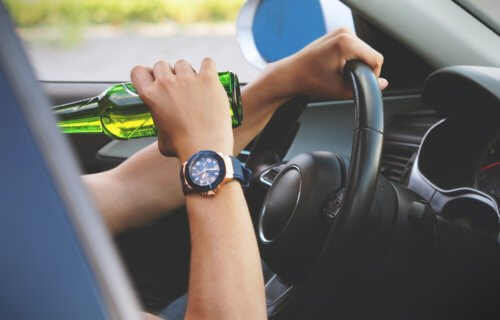CAMBRIDGE, United Kingdom — People who drink often know when the alcohol starts to “go to their heads” and they need to stop. However, drunk driving laws set the bar for intoxication much lower than that. Now, a new study finds half of drinkers can’t tell when they’ve reached the limit to legally drive after consuming alcohol.
Researchers from the University of Cambridge say the more alcohol people drink, the worse they become at judging whether it is safe for them to get behind the wheel. Drunk driving remains a major problem worldwide, despite decades of warnings about the risks of getting behind the wheel after one too many.
Road traffic accidents have become the leading killer for young people between five and 29 years-old, with booze being one of the main causes.
“In countries with legal alcohol limits, it’s usually the driver who makes a judgement about how much they’ve drunk and how fit they are to drive,” says study author Dr. Kai Hensel in a university release.
“But as we’ve shown, we are not always good at making this judgement,” Dr. Hensel continues. “As many as one in two people in our study underestimated how drunk they were – and this can have devastating consequences.”
Do you know when you’ve had enough?
Researchers conducted a two-day experiment involving 90 students in Germany to determine if participants recognized when to stop drinking before driving. The team split the students into two groups, giving them beer or wine until they reached Britain’s maximum breath alcohol concentration (BrAC) of 0.11.
The drunk driving limit in Germany is 0.05, which is 0.03 percent lower than in the United Kingdom. The limit is 0.08 in the United States.
Participants were told they would be switched from beer to wine or vice versa once they reached 0.05 percent, but not that it was the legal driving limit. Researchers used breathalyzers to keep track of how much the students drank throughout the exercise. With each measure, participants had to guess the concentration of alcohol in their breath and come forward once they thought they had reached the driving limit.
More than a third of students (39%) exceeded the drunk driving limit by the time they stepped forward. On the second day, this proportion increased to more than half (53%). Also, the more alcohol students consumed, the worse they became at guessing their level of intoxication.
“This could have serious consequences in England and Wales, where the legal driving limit is higher, as it suggests that a significant number of people might misjudge how drunk they are and consider themselves fit to drive when in fact they have a potentially dangerously high level of alcohol in their blood,” Dr. Hensel says.
Finding better ways to monitor intoxication
Their findings could help come up with new and more effective ways of reducing the number of deaths from drunk driving accidents.
“Drinking and driving is a major risk fact for road traffic accidents. Anything that can be done to reduce these numbers is worth trying. With guidance, our participants were able to improve their judgement. It could be that pop-up stalls set up around drinking establishments to help people understand their breath alcohol concentration might help,” the study author explains.
Study authors do note that how much people can drink before safely driving away depends on a wide range of factors.
“Really, the best advice is that if you’re driving, just don’t drink. But if you really do feel like a drink, then look into your own alcohol tolerance. This differs from one person to the next, depending on your sex, weight and age, and there are some reliable apps out there that can help guide you,” Dr. Hensel concludes.
The findings are published in the Harm Reduction Journal.
South West News Service writer Tom Campbell contributed to this report.

Drunk driving is a dangerous and prevalent problem. If convicted of DUI, penalties can be hard even for first-time offenders. It pays to never leave anything to chance. Never drink and drive!